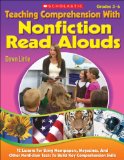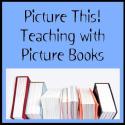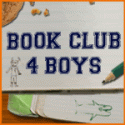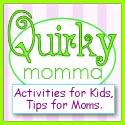Yesterday, I wrote about ways to make writing part of your family traditions. Today, I have a few ways you can authentically add writing to your family’s daily life.
- Have each family member make a list of things to do for the day/week.
- Write notes to slip into lunch boxes. End the note with a question. Ask your child to respond to the note in writing when he returns from school.
- Make a Top Ten List of. . . birthday gifts, games to play, chores to complete – endless opportunities. (see an example from our family below)
- Provide a Family Dialogue Journal in a central spot such as the kitchen. Write notes to each other in the journal. Provide different color pens to differentiate between family members.
- Make ABC books about favorite family topics (seasons, holidays, vacations, etc.). In my opinion, ABC books are timeless and this is an activity that can be enjoyed by children up through the end of elementary school at the very least. The complexity of the ABC book will depend on the age of your children.
ABC Book Models for Young Children:
Chicka Chicka Boom Boom: Anniversary Edition by Bill Martin, Jr. and John Archambault
by Bill Martin, Jr. and John Archambault
Alphabet City by Stephen T. Johnson
by Stephen T. Johnson
ABC Book Models for Older Children:
When I taught fourth and fifth grade, I would often use Jerry Pallotta’s alphabet books as models for my students. He has written several books that tied into our science curriculum and so I would read aloud the book and then students would make their own ABC book based on our science topic. Here is just a sampling of some of his alphabet books. There are many more:
The Underwater Alphabet Book (Jerry Pallotta’s Alphabet Books)
The Extinct Alphabet Book (Jerry Pallotta’s Alphabet Books)
The Icky Bug Alphabet Book (Jerry Pallotta’s Alphabet Books)
The Butterfly Alphabet Book (Jerry Pallotta’s Alphabet Books)
The Ocean Alphabet Book (Jerry Pallotta’s Alphabet Books)
The Construction Alphabet Book
The Yummy Alphabet Book: Herbs, Spices, and Other Natural Flavors (Jerry Pallotta’s Alphabet Book)
The Jet Alphabet Book
The Flower Alphabet Book (Jerry Pallotta’s Alphabet Books)
The Bird Alphabet Book (Jerry Pallotta’s Alphabet Books)
The Vegetable Alphabet Book (Jerry Pallotta’s Alphabet Books)
Some writing samples from our family:
Our Travel Journal – We travel every summer. About three years ago (when my son was 4) we traveled to Georgia to visit family. To give him something to do in the car and while on vacation, I created a travel journal personalized to our trip. I simply created a template so that he could draw and write based on a prompt.



Our Beach Alphabet Book – We take a trip to the beach every year. During the same year we traveled to Georgia, we also stopped in Myrtle Beach. I was looking for something to keep my son occupied and also provide lasting memories for us. I created “My Beach Alphabet Book.” I encouraged him to think about the things we did and saw while at the beach. I had planned for him to work on his book during down time at the beach, but we didn’t seem to have much. So instead, we worked on it when we returned. This turned out to be a nice way to reminisce about our trip after we were home. He only completed a few of the letters, but we still have a nice memory of our trip that year. And best of all, I can see how his writing has evolved over time, now.


Top Ten Reasons We Love Daddy – Last year for Father’s Day, we made a book for my husband. The kids listed their top ten reasons they love their dad. I provided ten pieces of cardstock and had my son (in kindergarten at the time) and my daughter (an early 3 at the time) brainstorm reasons they loved their dad. I had my son write them and then I split each page in half so each could draw a picture pertaining to their reason. We did this for eight pages. The last two pages of the book, I had each of them write one individual reason each and draw one picture. I made a cover for the book, punched holes in it, and tied yarn to bind the book. Needless to say, it was a big hit! The kids enjoyed making it and my husband really enjoyed receiving it! Oh, and it was a really inexpensive gift that came from the heart!

 (He reads books to us)
(He reads books to us)
How do you incorporate writing in your family?
©2010 by Dawn Little for Literacy Toolbox. All Rights Reserved. All Amazon links are affiliate links and may result in my receiving a small commission. This is at no additional cost to you.
is one of my favorite books to read with my children because
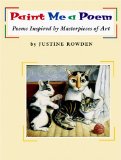 I like the premise of the book. As the author walked through the National Gallery of Art one day, she was inspired by the paintings she saw, and in her head began to hear music. The music became a poem and this book is a collection of thirteen poems inspired by famous artwork.
I like the premise of the book. As the author walked through the National Gallery of Art one day, she was inspired by the paintings she saw, and in her head began to hear music. The music became a poem and this book is a collection of thirteen poems inspired by famous artwork.













